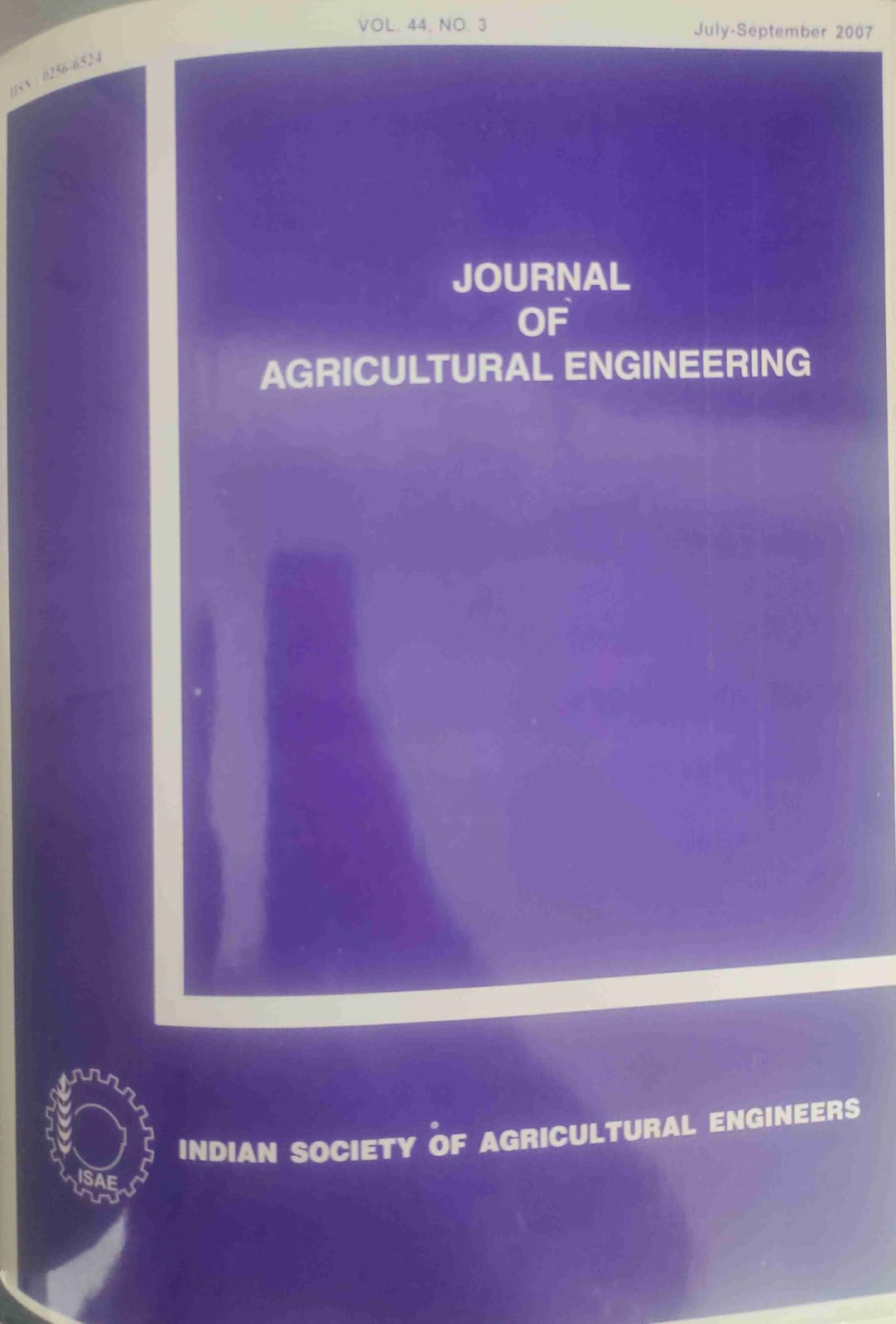Weeders for Drudgery Reduction of Women Farm Workers in India
DOI:
https://doi.org/10.52151/jae2007443.1279Abstract
Women playa vital role in agriculture. Rural women perform the entire household activities as well as they are employed in most arduous field operations. They are also engaged in post harvest and agro-processing activities. Weeding activity is predominantly carried out by women. Weeding activity is a strenuous one and the odd posture adopted by women while weeding may increase the heart rate out of proportion and lead to irreparable damage to the body. The present research assesses three types of weeders on ergonomic parameters with a view to promote health, efficiency and consequently improving the quality of work life. The study was conducted in vegetable fields on 30 farm women in the age group of 25-40 years having normal blood pressure, body temperature and not suffering from any chronic illness. Ergonomic cost of weeding activity was calculated in terms of heart rate and energy expenditure. Body map technique was used to assess the musculo-skeletal discomfort of the workers. Results of the study revealed that all three weeders proved efficient on ergonomic parameters; reduced average working heart rate, energy expenditure and output as compared to traditional tool. The posture improved while working with weeders as the bending and squatting posture employed while weeding with traditional method was replaced by standing posture.
References
Behera BK; Swain S. 2005. Ergonomic Evaluation and Design Modification of Push-Pull Type Weeders. In: Proc. International Ergonomics Conference, HWWE, lIT, Guwahati.
Census of India. 2001. http://ncw.nic.in/pdf reports Garrow J 8.1987. Human Nutrition and Dietetics. Nutrition News 1991. National Institute of Nutrition, Hyderabad.
Nag P K; Dutt P. 1979. Effectiveness of some simple agricultural weeders with reference to physiological responses. 1. Human Ecology, 8, 13-21.
Nag P K; Dutt P. 1979. Cardio-respiratory efficiency in some agricultural work. Applied Ergonomics, II, 81-84.
Saha P N. 1976. The practical use of some physiological research methods for assessment of work stress. J. Indian Association of Physiotherapists, 4, 9-13.
Sharma V. 1999. Ergonomic assessment of weeding activity with conventional and modified tool. M.Sc. Thesis submitted to Department of Family Resource Management, College of Home Science, Maharana Pratap University of Agriculture & Technology, Udaipur.
Singh R K P; Agrawal K N; Satapathy K K; Ghadge S V. 2001. Study of drudgery prone activities and women's participation in paddy cultivation in Meghalaya. In: Proc. Conference on Humanizing Work and Work Environment.
Varghese M A; Bhatnagar A; Saha P N. 1996. Ergonomics Research of Women in India: A monograph. Post Graduate Department of Family Resource Management, SNDT Women's University, Mumbai, India.
Varghese M A; Saha P N; Atreya N. 1994. A rapid appraisal of occupational workload from a modified scale of perceived exertion. Ergonomics, 37, 485-491.
Wilson J R; Corlett E N. 1995. Evaluation of human work: A practical ergonomics methodology (2nd ed.). Taylor and Francis, London.














